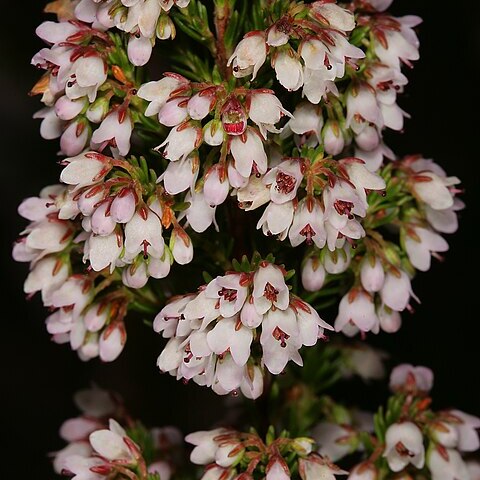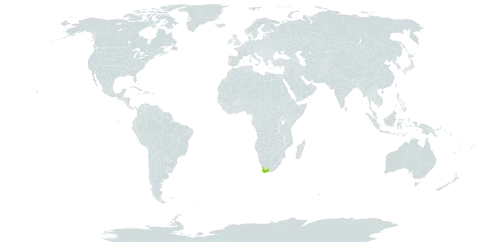Erect, bushy shrub up to 60 cm (2 ft) or so. Branches pubescent. Leaves 4-nate, 4-6 mm long, erect to spreading, broad-linear, subobtuse, keeled, sulcate, glabrous. Flowers 3-nate to umbellate, terminal; peduncles 3-4 mm long, slender, pubescent; bracts small, median. Sepals 1.5-3.0 mm long, ovate to oblong-lanceolate, subscarious, keeled, glabrous, ciliate or naked, often reddish. Corolla 3-4.5 mm long, campanulate, dry glabrous, white or rosy; lobes 2/3-4/5 the length of the tube, slightly spreading, obtuse. Anthers included, 0.8-1.0 mm long, lateral, cuneate or oblong, ciliolate or naked, appendiculate; pore 2/5-3/5 the length of the cell; crests 1/2 as long as the cells or longer, lanceolate, acuminate, minutely lacerate, fringed or pubescent, spreading backwards or deflexed, sometimes with one or more short lobes. Ovary turbinate, glabrous; style exserted, sometimes decurved; stigma capitate.
Like E. lateralis , erect shrublet to 60 cm. Flowers small, bell-shaped, pale to dark pink, often scented.

